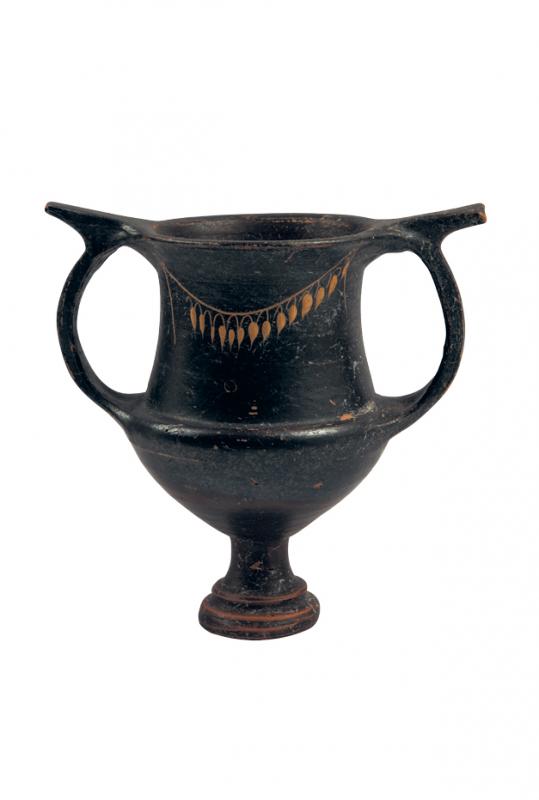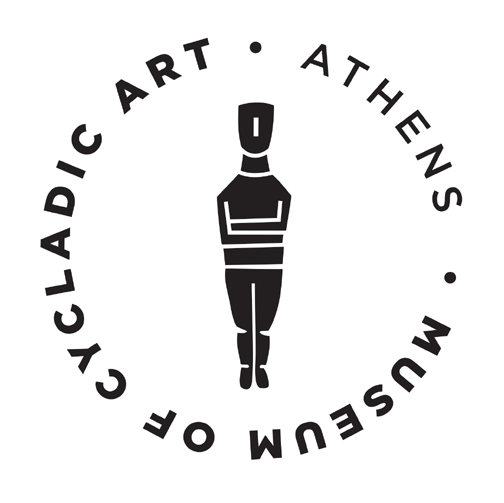
Kantharos
Kantharos
The painted pottery of the Hellenistic period differs considerably from the red-figure creations of the 4th c. BC. A characteristic type of Hellenistic pottery is the so-called West Slope Ware, which owes its name to the discovery of representative examples on the west slope of the Athenian Acropolis. The decoration –mainly vegetal motifs such as ivy leaves– is executed in added reddish brown or white clay on the black-glaze ground. The first examples of this group appeared in the workshops of the Athenian Kerameikos around the mid-4th c. BC, the only difference being that on these the added clay was gilded. West Slope vases appeared in their typical form in the early 3rd c. BC, while the latest examples date from the 1st c. BC. In the later stages of the style incised ornaments became common. West Slope vases were also produced in other places, such as Pella and Pergamon, and enjoyed wide distribution throughout the Eastern Mediterranean. Pottery with similar decoration has also been identified in the West and is named Gnathian, after the city of Egnatia (Gnathia) in Apulia, where it was first found.





